
The 2012 edition of the Classic Motor Show filled up 11 cavernous halls at the Birmingham National Exhibition Centre: the biggest ever event in its history and a car-lover’s paradise. CMS is put on over three days, and realistically that’s the time you would need to drink in the entirety of the show. The halls were vast and their contents diverse and exciting, with car clubs giving a visual history of many classic marques. The show has become the perfect way to bring the classic enthusiasts’ year to a glorious, sparkling end.
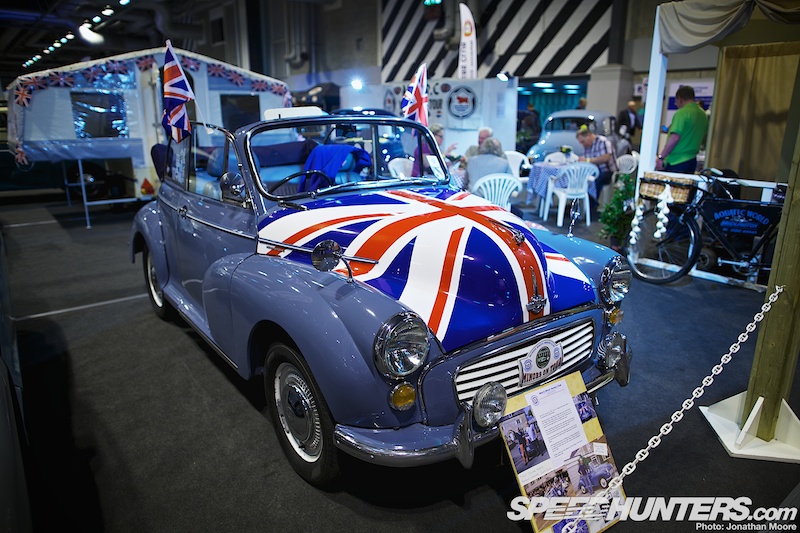
Although almost every global automotive manufacturer possible was represented at CMS, there was fantastic representation of the best of the British motoring industry.
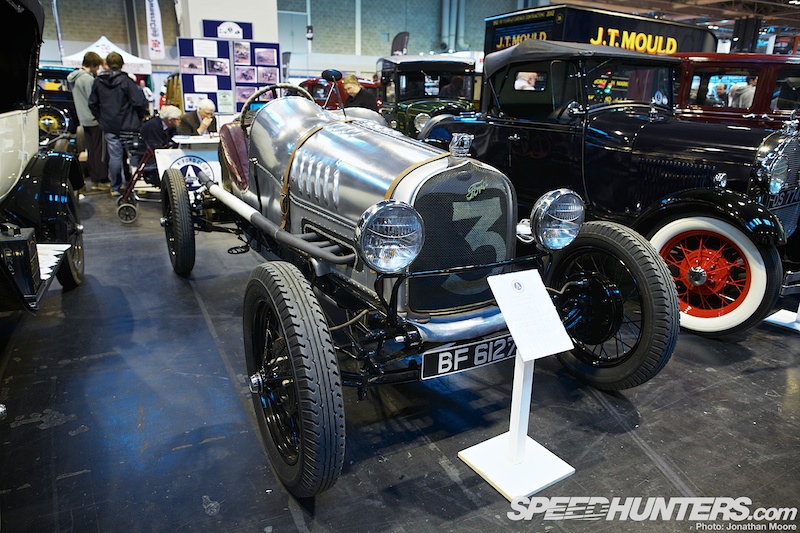
Hall 19 was all about Ford, all the way from a 1929 Model A through to the modern era, and Ford Of Britain in particular. The term ‘classic car’ can be used quite loosely now: it really does seem to encompass anything that isn’t in current production.

Fast-forwarding to the ’60s, modern saloons were breaking into the mainstream. The Zephyr…

…and the following Corsair from the Consul range were bringing some American style to the previously austere-looking cars roaming British streets up until then.

But it’s the Cortina that became Ford’s icon of the ’60s: a car that kept evolving on both the track and in the public’s consciousness. MkI Lotus Cortinas are regulars on the historic racing circuit; this utterly immaculate example was quite stunning.

It’s the owners who make these shows so much more than just a museum of static metal: passionate and talkative all, you get the chance to find out not just the history of a particular project but more often than not a whole lot more historical context and obscure details.

This 1970 MkII Savage was tracked down in a dismantled state: its owner was then stalked for eight years in an effort by the current owner in an effort to persuade the man to eventually sell! It’s a true restoration, not a rebuild, with as many original components as possible used.
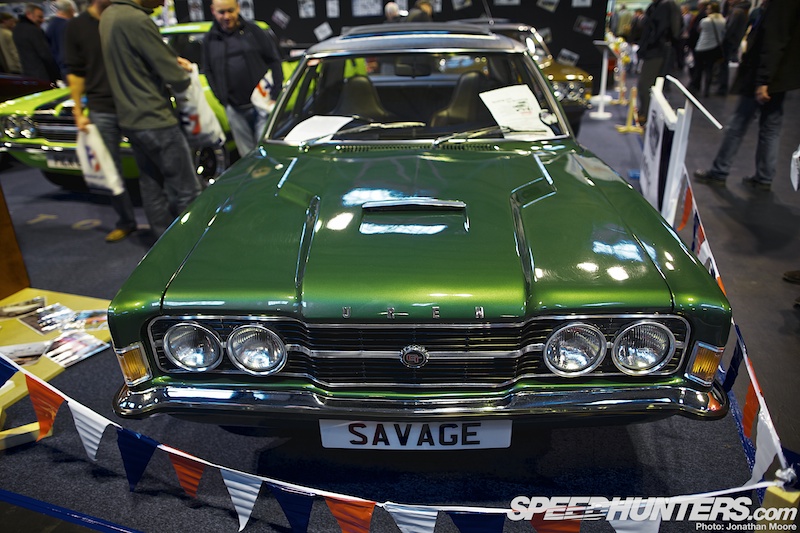
The MkIII took the Cortina into a completely different direction, going more towards what was coming out of Detroit rather than Cologne. A mini muscle-car with performance to match if the largest engine option was installed.
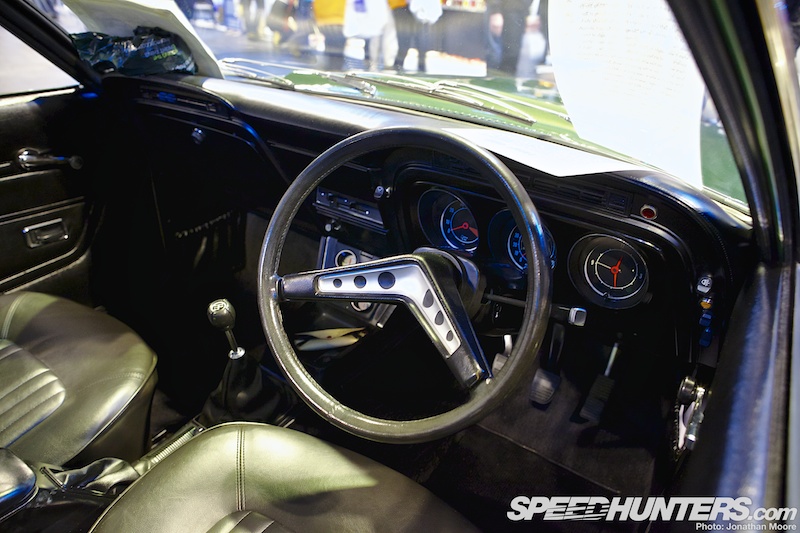
The interior was just as interesting, with simple, racing-style dials and the boomerang-shaped steering wheel. The shame is that the MkIII suffered from the perennial problem of the ’70s and ’80s automotive industry, terrible rust, which makes seeing such pristine examples such a rarity.

Because of the low numbers of survivors, sometimes radical action is required to bring a MkIII back to life. The MkIII pick-up variant was only sold in South Africa, and this one has been recreated from the base of a MkV.
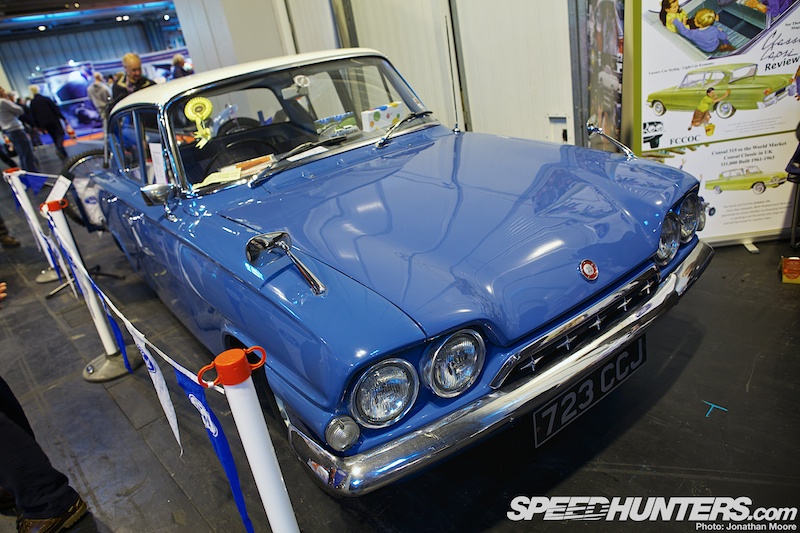
Another iconic car also sprung from the Consul family: the two-door Capri coupé (this is the Ford Classic upon which the Consul Capri was based). The first Consul model was built between ’62 and ’64, but shared little in common with the more familiar Capri that would follow five years later.
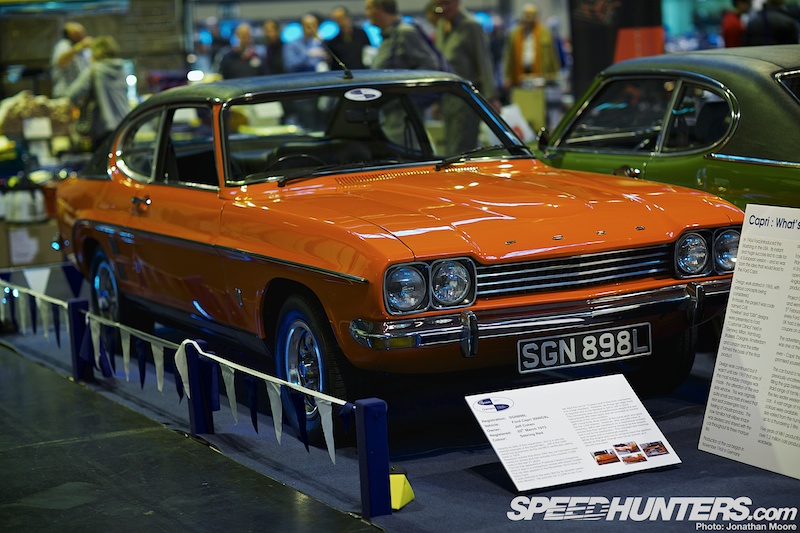
But there are those quad headlights… The MkI was built in huge numbers, such was the world’s hunger for the sleek coupé: over a million were produced, with strong markets even outside Europe that included America. This is a 3000GXL in Sebring Red from 1973, the penultimate year of production for the MkI shape.
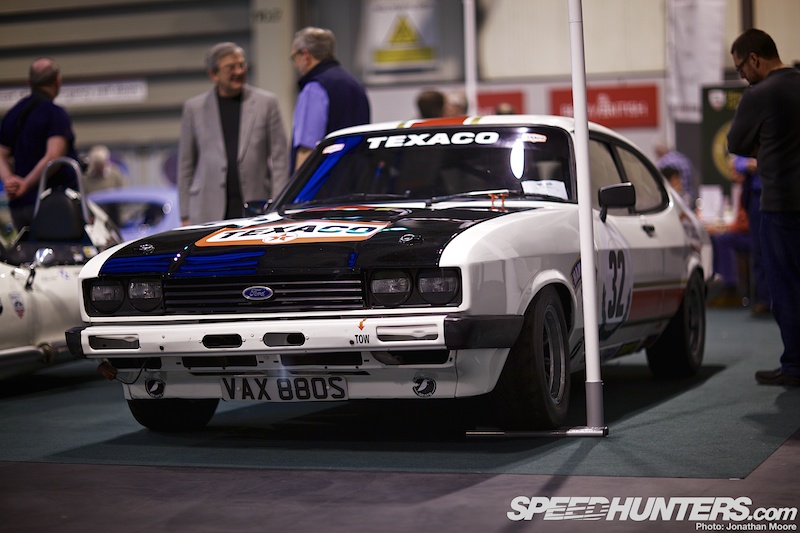
The quad headlights were, shockingly, dropped for the MkII, but returned for the MkIII, as seen here in racing guise: the Capri was as strong on the track as the road.
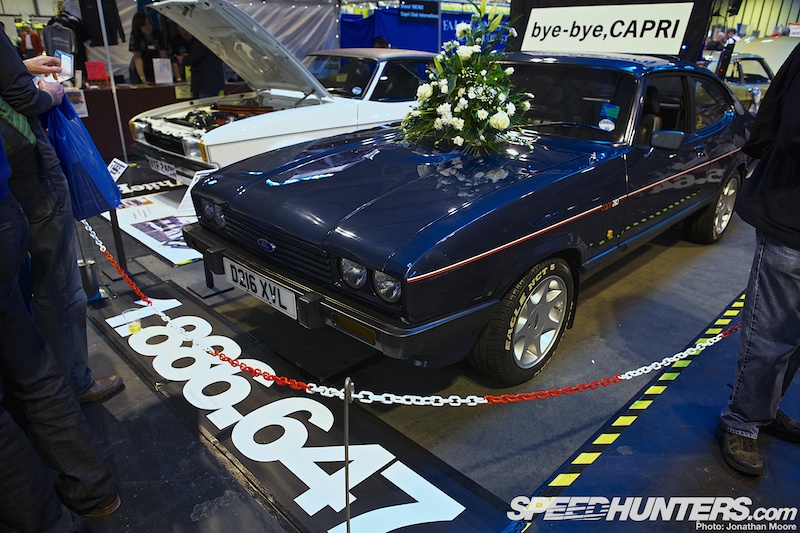
The 280 was the final Capri to roll off the production line, after 1,886,647 cars had been sold over the car’s lifetime.
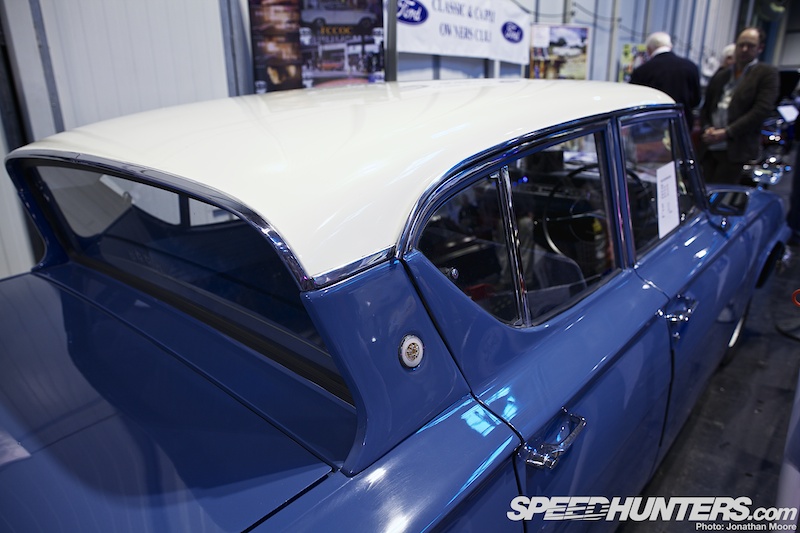
Back to the Classic, and it’s clear that there’s another car that descends from it…
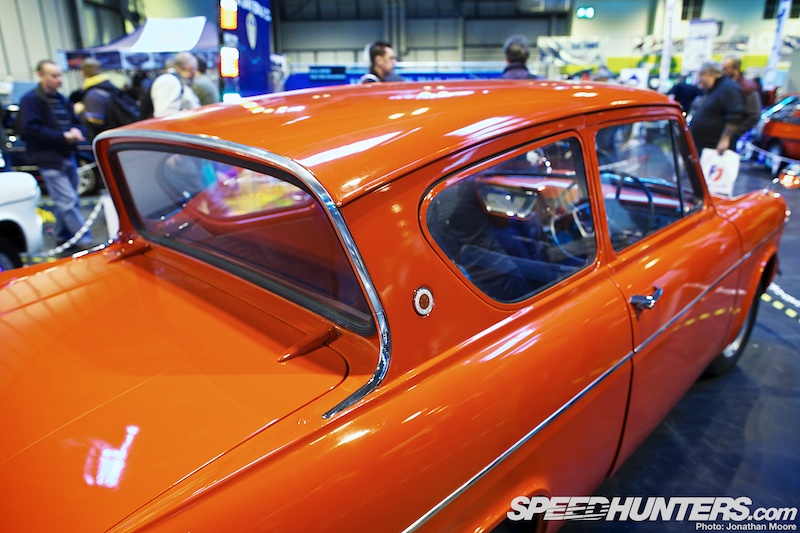
The Ford Anglia 105E was the boy racer’s car of choice in the ’60s: easy to modify, fast and furious, these were the cars to have before attention turned to the Capri.

Although the emphasis at CMS is on restoration and preservation, that didn’t mean that customisation was excluded: especially when you could take the whole ’60s drive-through concept and turn it on its head!
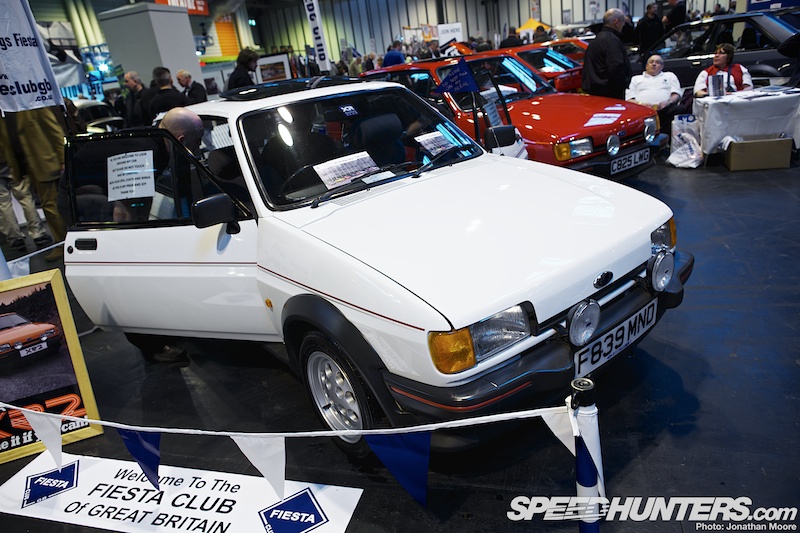
My father has a soft spot for modified Anglias from his early driving days, but this is the car that brings memories flooding back for me: the Ford Fiesta XR2. Part of the hot-hatch revolution, I now find it difficult to believe that I learned to drive in a MkI XR2. It might be why I take corners too fast…
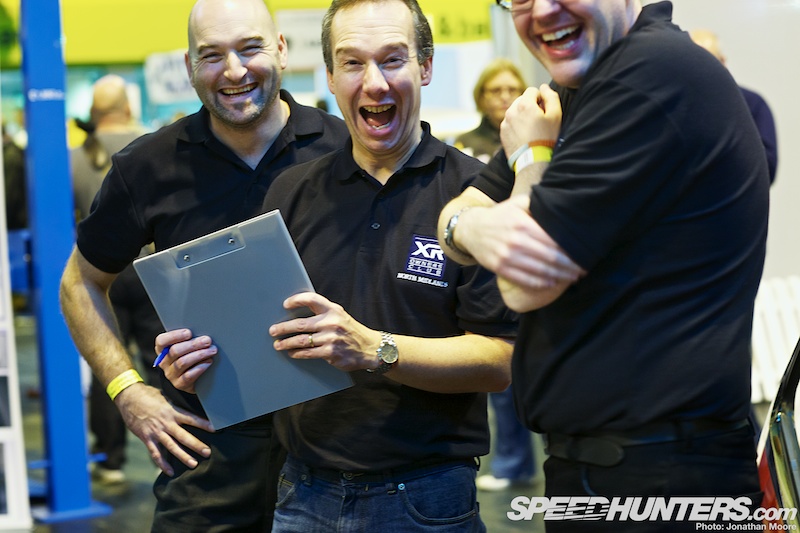
The XR Owners Club team of experts seemed to be enjoying the Fiesta as much as I was!
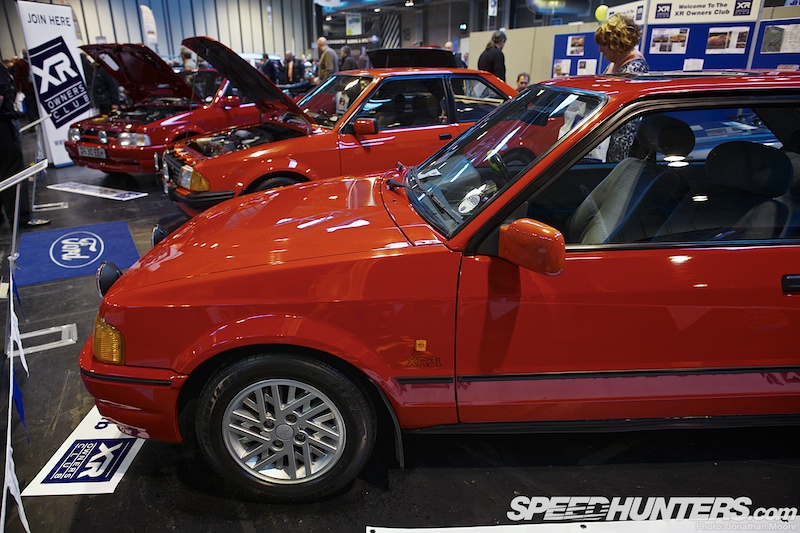
Ford provided a clear aspirational ladder of performance with its XR range: next on the list would naturally be an XR3i…

…followed by a mighty Sierra XR4i. Even better in modern Time Attack form!
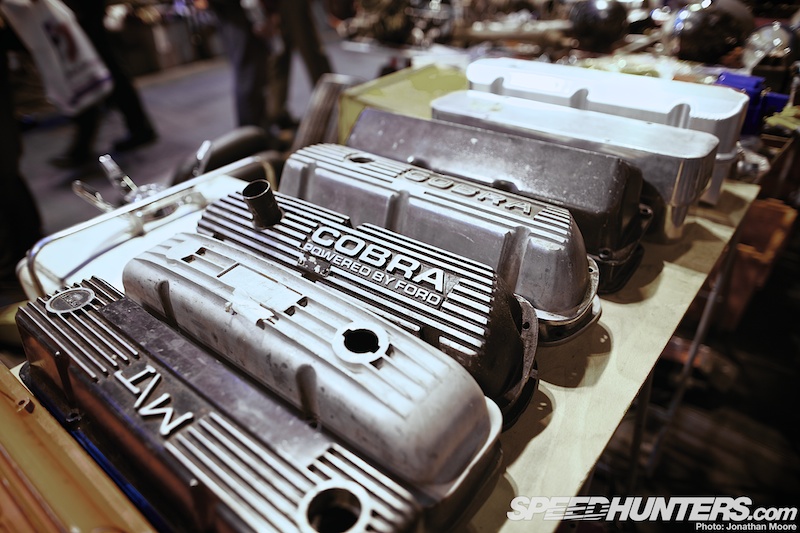
One of the most interesting – and potentially dangerous to the wallet – areas of the show was the auto-jumble, which took up a sizeable chunk of Halls 17 and 18. With serious restoration work on most people’s mind, I still couldn’t help but think how great a Cobra cover would look on my wall. Yes, I would prefer a Cobra to put it into, but there you go…
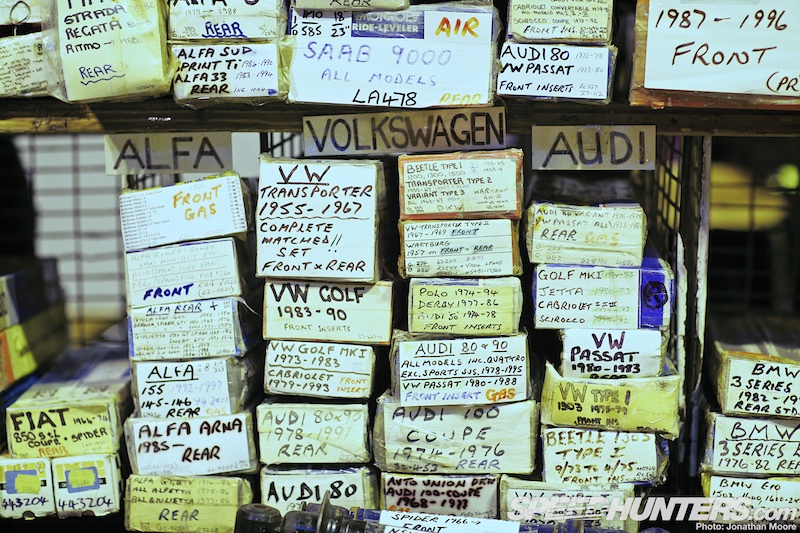
Literally any internal component from any car you care to mention could be found amongst the myriad of stalls…

Whether authentic radios…
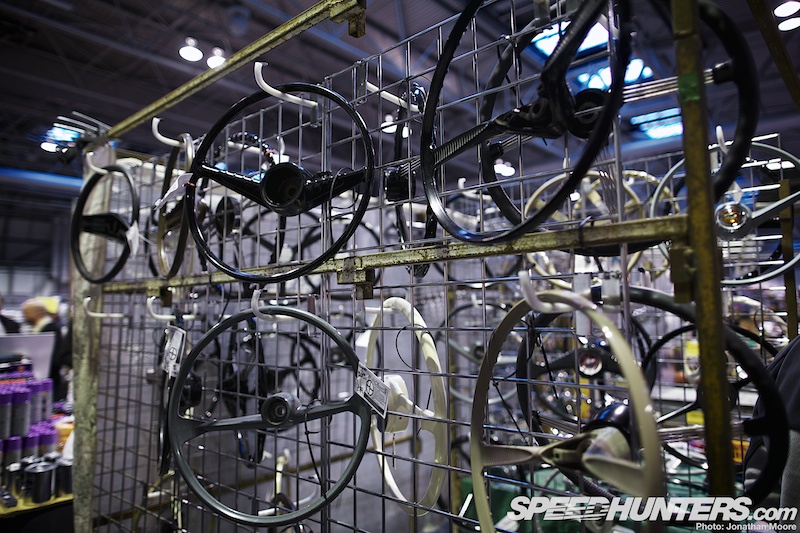
Steering wheels…

Or even workshop overalls.
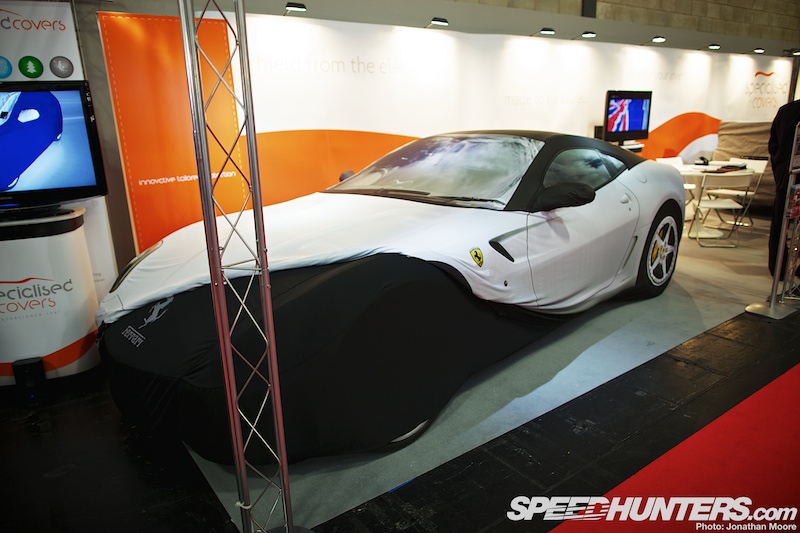
This could be quite a good cheat if what’s under the cover doesn’t quite originate from Maranello…
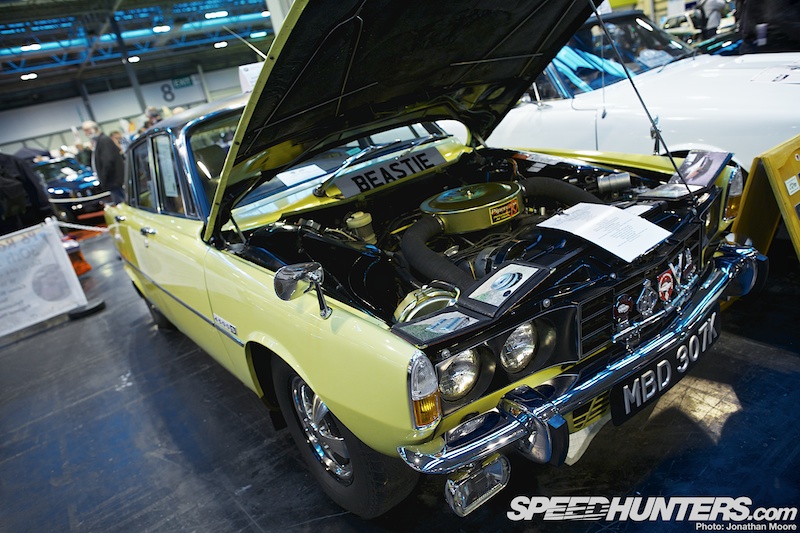
Back to the car clubs, and a much maligned brand, another victim of the hacking apart of British motoring industry’s still twitching corpse: Rover. Responsible for innovative, advanced saloons in the ’50s and ’60s and classic, meaty V8-powered fastbacks in the ’70s and ’80s, Rover’s prolonged and inglorious death in 2005 was a sorry thing to see.
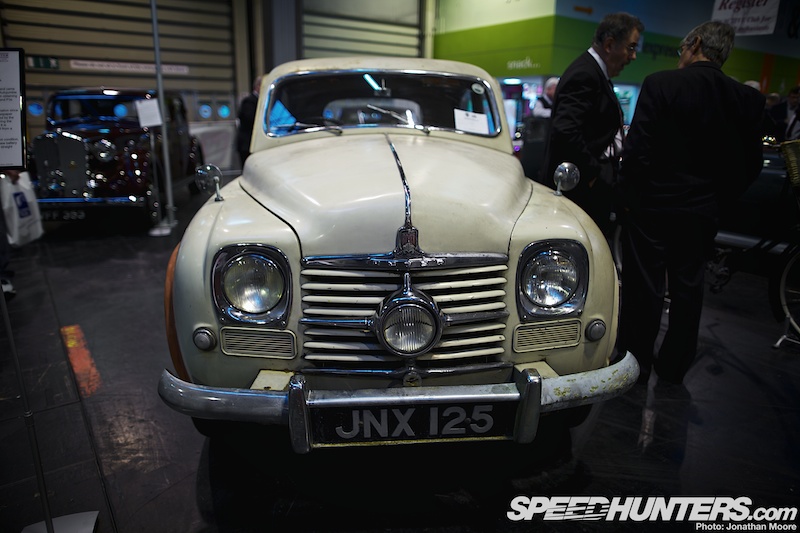
This is a Rover P4 ‘Cyclops’ from 1949: the oldest Cyclops in existence and the third car off the P4 production line. It had been ‘resting’ since the late ’60s, and was recently found in this condition – which is really rather good! It even fired up straight away after an engine clean and battery change, which is even more impressive.
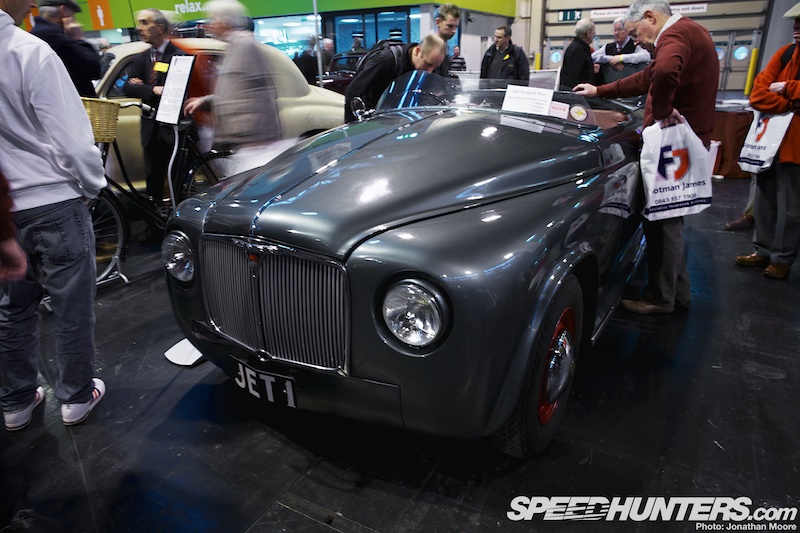
A rather more extreme P4 was JET1, from 1952. Rover dabbled with turbine technology in the post-war years, and came up with this jet-powered car as part of an attempt on the gas-turbine powered speed record.
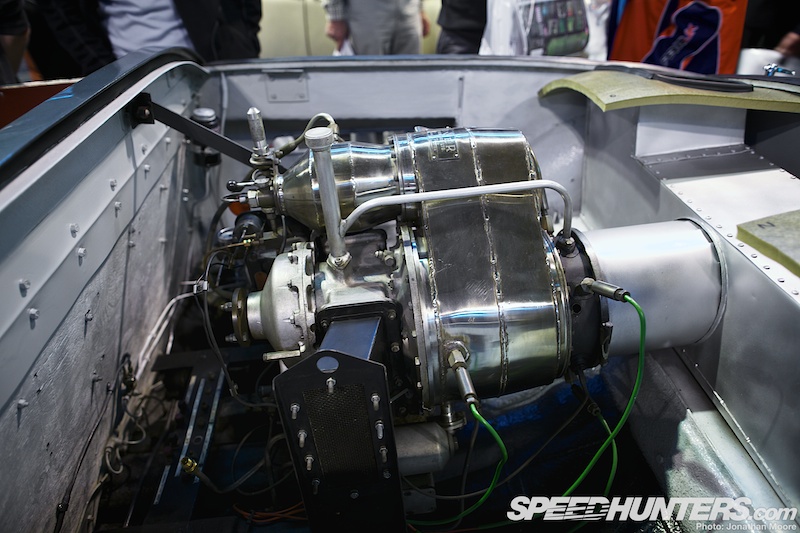
The jet engine was mounted behind the driver and passenger, with intakes down the side and outlets above the tail. This replica was built to commemorate the 50th anniversary of the original car, but has a Rover 3.9-litre V8 under the hood to provide motive power, with the jet providing an accompanying aural shock and awe.

The P4 was also the basis for another, more refined sportscar: the Marauder. Built by ex-Rover employees, a single coupé and just over a dozen roadster-bodied Tourers were built.

The elongated nose contained a bored-out 2.4-litre six-cylinder with a triple carb SU head, and the forward-opening doors were an unusual feature of the Marauder’s svelte styling. A little piece of specialist Rover history.
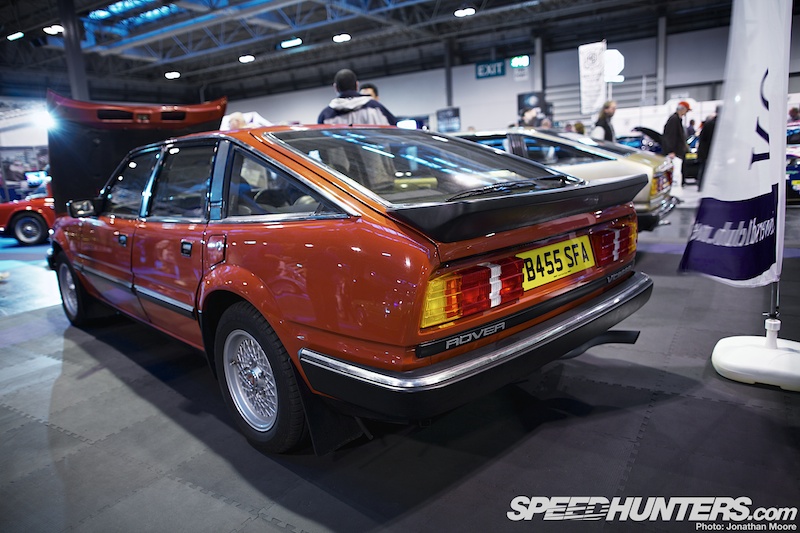
The SD1 (76-86) was the last ‘real’ Rover that deserved the name, at least in the looks and power stakes. Build quality was sadly questionable, as were so many UK-produced cars of the era.
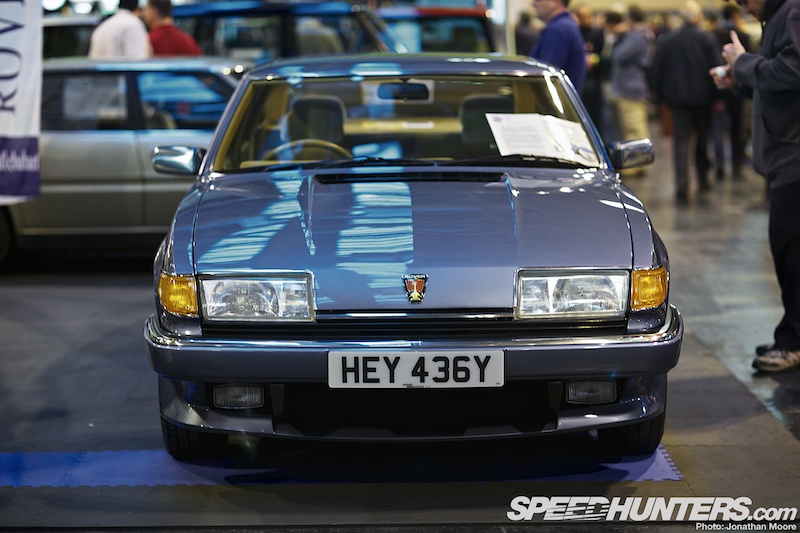
Rover SD1s even crossed the Atlantic to the USA as the V8-powered 3500 NAS model. This 3500 was imported back to the UK from Virginia last year, restored and had a bare-metal respray back to the original factory colour.

Of course, if you’re going to restore something you need reference material to know what you’re doing: that was time to head back to the auto-jumble, which overflowed with manuals and period brochures.
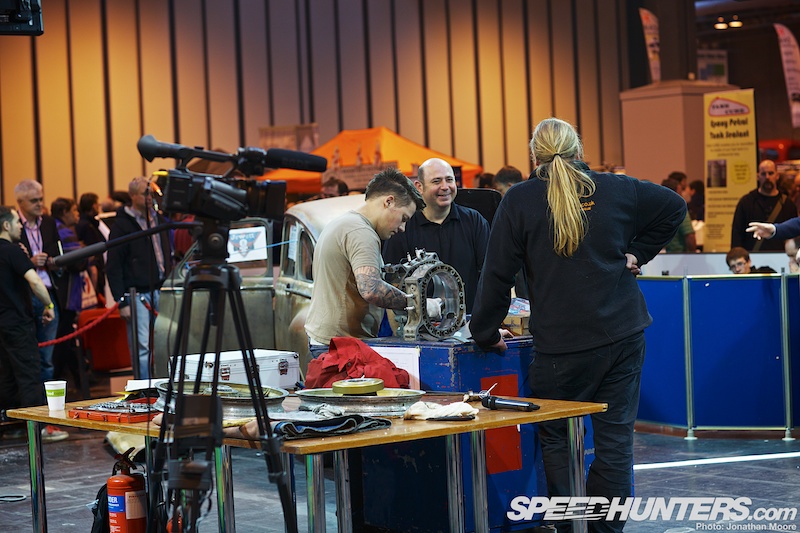
The show also had a Restoration Theatre, where the experts handed out tips and tricks…
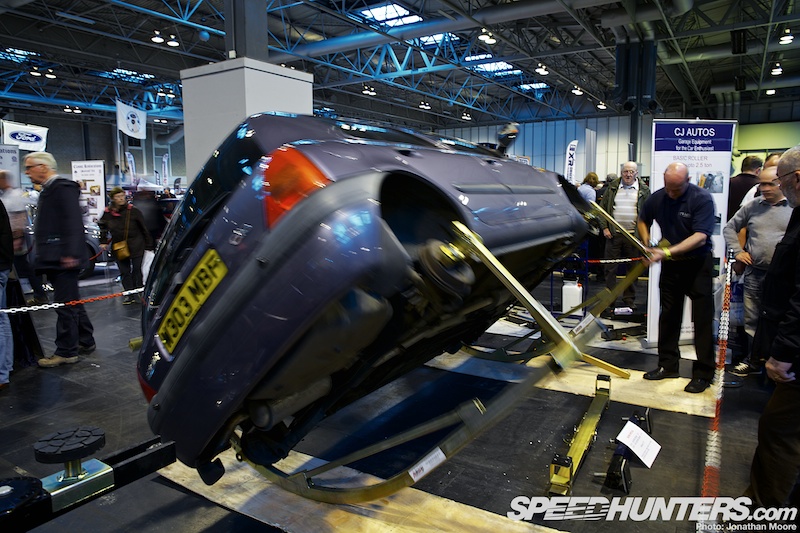
…whist round the corner you could find a whole plethora of ways to kit out your perfect garage. How about this roller for a practical way to get to the underside of your car?

Even advertising brochures are both collectable and useful. Somewhere in my loft I have a box of promotional brochures that I hoovered up as a kid at London motor shows…

And of course there were books. Lots of books. Carrying cameras didn’t over-ride my need for more hardbacks – after all, I have shelf space to fill – and I built up a stupidly heavy pile of books scattered around various vendors, ready for me to pick up on the way out.

If you can’t afford the big boys toys, then the small ones can do just fine…

There were some rare examples of some other British sportscars dotted around, like this racing MG with aero-profiled nose and tail sections added.
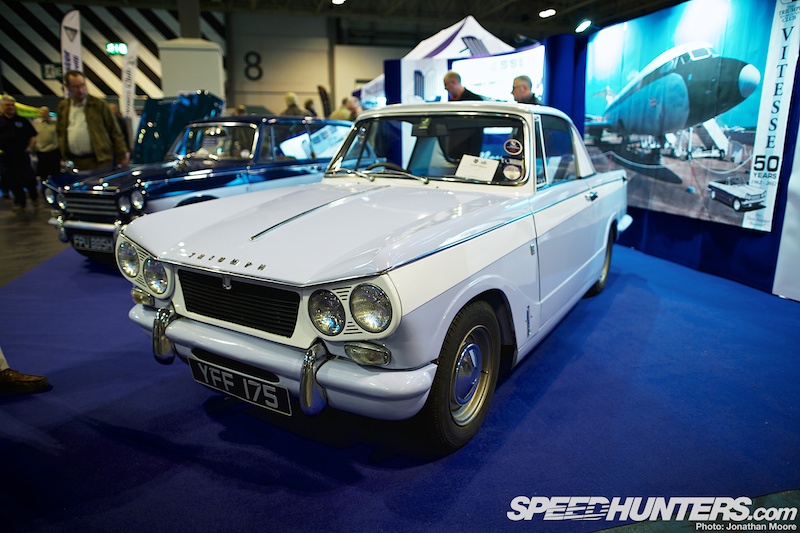
Like MG and Rover, Triumph were also hoovered up into the Austin Rover Group in the ’80s, which signalled a rapid decline for a brand which had, like so many of the others, previously produced interesting cars. This is an enthusiast’s recreation of the Triumph Vitesse coupé prototype, originally styled by Michelotti.

One of Triumph’s more popular later cars was the wedge-shaped TR7, perhaps the firm’s take on the Lancia Stratos: at the time it was advertised as The Shape Of Things To Come.

V8-powered TR7s were successful in rallying, specifically on tarmac and in the hands of Tony Pond.

Austin Rover’s last hurrah in rallying was with the Group B Metro 6R4: diminutive in size, but huge in performance.

Seeing one next to road-going Metros shows just how pumped up they were, bearing little relation to the tiny boxes that I remember driving!
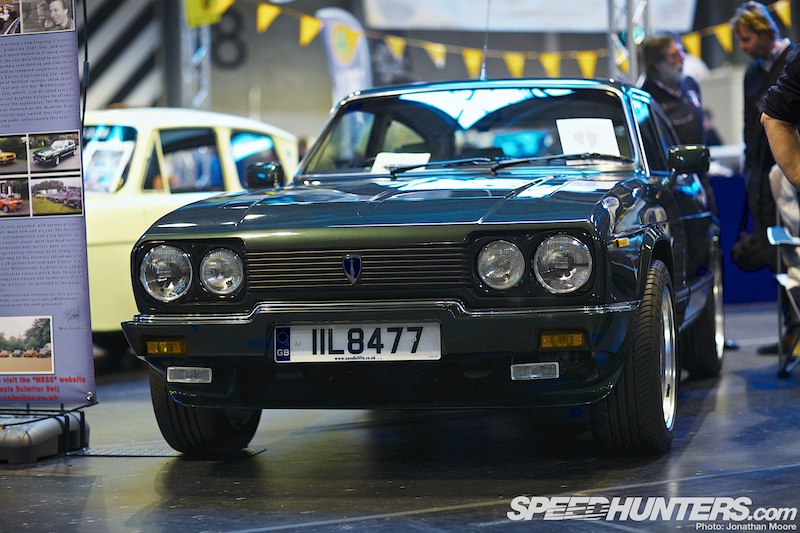
Reliant might be better known for their three-wheelers, but the Scimitar was a serious sports coupé – with four wheels. The GTE was a good-looking car and powered by a V6, a far cry from the company’s usual fare.
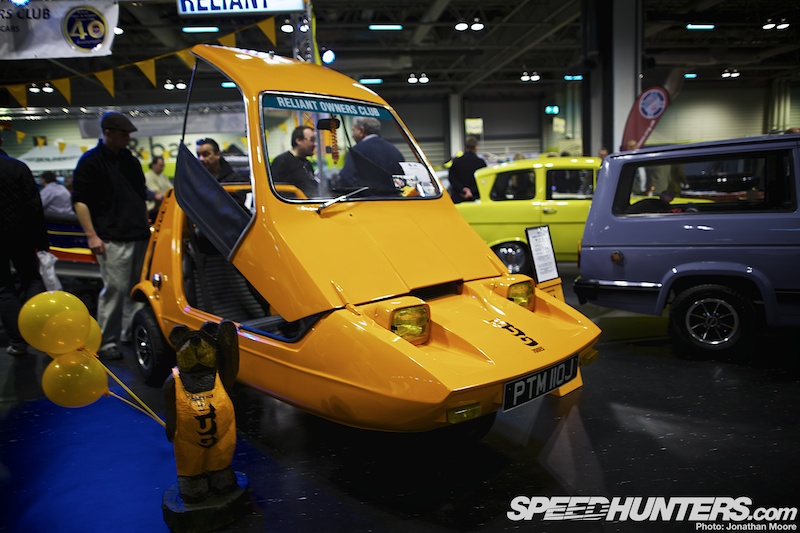
That said, after Reliant took over Bond Cars they did produce this, the Bond Bug: its claim to fame is being used as the undercarriage for the Landspeeder in Star Wars!

Finally, there had to be a sportscar in there somewhere, and this ticks both the racing and Martini livery boxes: a Chevron B31 from 1975, which competed in the two-litre class of the World Championship For Sportscars.
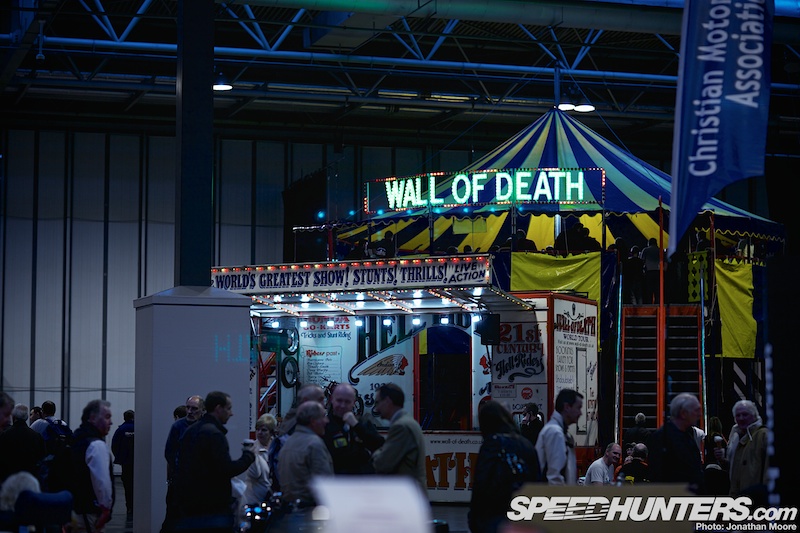
The show continued on through another five halls, with retro motorcycles, the auction and car sales area and yet more manufacturer clubs to discover…
Jonathan Moore







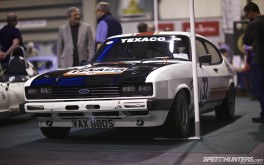





We can not go two days without accessing the site, we are supreendidos positively. Congratulations Guys!
i love the way that aero mg looks
also, was the LM600 the only Marcos at the event? i'd have loved to see some pics of a mantis, new or old
I just stumbled upon one of the Reliant Scimitars on the streets ... Think its even better looking than the Volvo P1800ES. Great car with quite a usable chassis as well. Very nice shooting brake!
What no early MINIS? That MK II Lotus Cortina is pretty rad though.
What no early MINIS? That MK II Lotus Cortina is pretty rad though.
That's a nice Reliant Scimitar, Princess Anne had one you know.
That's a nice Reliant Scimitar, Princess Anne had one you know.
further proving i really need to get my act together, and starting going to car shows outside North America
further proving i really need to get my act together, and starting going to car shows outside North America
Saw a Scimitar yesterday at a petrol station looked in pretty good nick too. Are you going to cover the Rootes company cars in the next one? (I'm a bit biased having a Hunter myself)
Saw a Scimitar yesterday at a petrol station looked in pretty good nick too. Are you going to cover the Rootes company cars in the next one? (I'm a bit biased having a Hunter myself)
Noice!! The Lotus Cortina is a Mark 2 not the venerable legendary Mark 1. Still cool though!
@Fernando Fotografia tx! Welcome to the addiction.
@RodChong I'm addicted to SpeedHunters and Photography!
All UK made cars are tragically awful.
This just adds to their appeal...
@maxproof They are good, but internally they're not as refined as a P1800ES. The fibreglass body is neither here nor there either, the ones I've had experience of have been an incredible mix of mile or mill thick. Still cheap in the UK though.
@Fernando Fotografia @RodChong There are worse things to be addicted to
@brynmusselwhite In Germany they're extremely rare. The one i saw was in incredible condition. A little "patina" on the interior but pristine bodywork. Still .. you must be right about the buildquality. Still i'd like to own one later just for it's rareness. The chassis is mostly large-scale production parts isn't it?
@brynmusselwhite In Germany they're extremely rare. The one i saw was in incredible condition. A little "patina" on the interior but pristine bodywork. Still .. you must be right about the buildquality. Still i'd like to own one later just for it's rareness. The chassis is mostly large-scale production parts isn't it?
@brynmusselwhite @Fernando Fotografia @RodChong Like cars